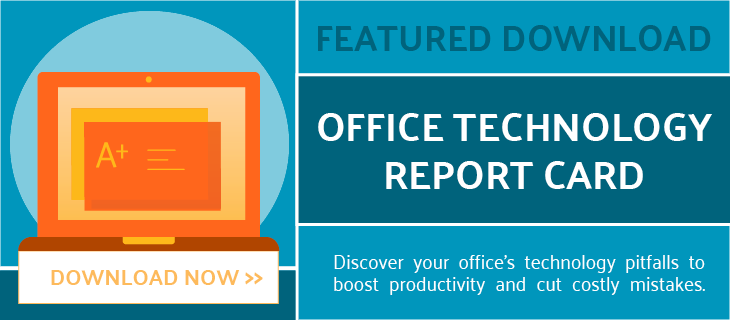Information is a never-ending commodity in business. A growing business means gaining more customers and, in turn, having access to their information. In many cases, bringing in a new customer can warrant you a lot of information, so much so, in fact, that it can become increasingly difficult to manage and locate files.

A solution to this abundance of information is information sharing via the cloud. The Cloud makes sharing information among employees quick and easy by compiling all of the necessary files into one organized and accessible location.
Because of the sensitivity of client data and information, it is important to be aware of the real-time risks and know how data storage can make or break a company. Having a clear and direct discussion with your IT team is vital before making the jump to information sharing. Therefore, it is essential to know the good, the bad and the ugly of the Cloud. Here are some things you need to be aware of.
The Good
- Cost: Cloud-based storage can help reduce costs by diminishing spending on software, infrastructure and equipment. Because the Cloud offers a scalable “pay as you go” subscription, companies only pay for the information and storage they actually use. As a result, Cloud services require a lower initial investment and lower costs than an in-house IT team. According to McAfee author Cameron Coles, companies that invested in Cloud services experienced a 15.07% decrease in IT spending.
- Backup and recovery: The Cloud is great for backing up duplicates of paper or digital documents. Sometimes an outdated file needs to be referenced, so even backing up older documents can make a day in the office easier. Additionally, if the original documents are compromised in any way, the Cloud makes the recovery process simple by storing data. Salesforce states, “While 20 percent of Cloud users claim disaster recovery in four hours or less, only 9 percent of non-cloud users could claim the same.” This is because Cloud-based services provide quick recovery data and offers 24/7 availability unlike many in-house IT structures. Downtime in a company’s services can lead to a damage in brand reputation, unproductivity and loss of revenue. Therefore, a quick disaster recovery is essential to any organization.

- Accessibility:The beauty of the Cloud is that it’s everywhere. Work on it in the office, at home, at any time, or across the world from any device. Whether it is on your laptop, tablet, or cell phone, the Cloud is completely accessible. There are over 2.6 billion smartphones in use today, therefore, Cloud users are never out of the loop. All you need is internet access, however with some providers, you can make files accessible even when you’re offline.
- Security: Due to the amount and type of data that can be stored, Cloud storage has extra security to protect it all. While many in-house IT systems have a variety of problems and IT concerns to deal with, a Cloud host’s full time job is to deal with security. According to Microsoft, 94% of businesses who switched to the Cloud saw an improvement in security. The Cloud offers a variety of security measures, and security settings can be set based on the user.
The Bad
- Space: At some point, your storage needs could outgrow the space you originally paid for. If you anticipate a significant growth in business, you should plan to increase your Cloud space too. Unfortunately, an increase in space will raise the costs for your Cloud service. While some Cloud providers allow unlimited storage bandwidth, many do not. It is important to compare prices of different providers because if an organization surpasses the amount of given storage space, the extra charges can be extensive.
- Organization limitations: Because Cloud storage services have their own infrastructure, organizing data exactly how you want it could be difficult. A Cloud provider’s policies might allow customers to maintain control of their data, services, and applications but might restrict what customers can do with their deployments. On the other hand, this service is designed in such a way to make organization easier, so while it may be difficult to adjust to this new way, it will be easier to maneuver through your information. The “Cloud way” provides an accessible platform that allows team members to collaborate and share information in a convenient manner.
- Relocation: When transferring data that was once stored through your software and programs to the Cloud, it may be rearranged or even fail completely if your system is not compatible with your service provider’s. Additionally, companies must also factor in the cost of labor and downtime of operations when switching to the cloud.
The Ugly
- Hacker attacks: For your business and its employees, the Cloud is a gold mine of information. Despite the cloud’s extra precautions, sensitive and valuable information entices hackers to take a crack at the security of your Cloud. Since many individuals, namely employees, can have access to your cloud, hackers have multiple opportunities to make victims out of your employees. Through phishing scams and malware, hackers can weasel their way into your important data. While the cloud offers hefty security, it is not entirely foolproof. It is vital to educate your employees and take preventative measures in order to keep your information secure.
Now What?

With the natural progression of technology, the cloud is becoming more secure, accessible, and cost-effective. People are seeing the value in the cloud, and in turn, are moving their operations to run on it. The Cloud enhances information workflow and provides an easy and convenient platform that encourages communication among employees. People are able to meet virtually and conveniently share information in real time. The cloud offers improved mobility and collaboration that makes growth more viable for SMBs, while reducing IT costs for a business.
Like any other developing technology, the Cloud does have certain risks involved. It is important for users to understand the exact roles and responsibilities of the Cloud vendor, and Cloud usage should be assessed in a risk-benefit analysis. However, with the proper precautions and efforts, disadvantages of Cloud-based services reduce to virtually zero. The Cloud is a cost-effective and efficient network that provides IT solutions for many.
Categories: Security, Cloud-based, Information Sharing











